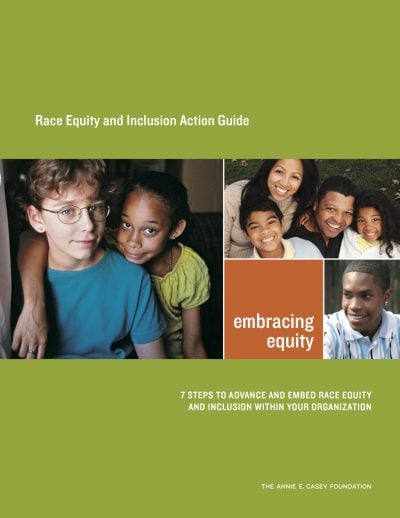Racial Equity Defined
Equity means giving people what they need to enjoy full, healthy lives, regardless of race.

Advancing racial equity and inclusion can sometimes seem daunting and often leaves many wondering how and where to start. One way to achieve social change in an organization is to incorporate race equity and inclusion at every stage of work. The seven steps in this action plan provide a clear framework for undertaking this important work. This tool adds to the resources already created by partners who have been working in the field. It works by demonstrating how a race equity lens can be adopted by foundations or other organizations that work directly with systems, technical assistance providers and communities.
The following are definitions of core concepts that are outlined within the report which can help groups develop a shared language for race equity and inclusion:
What is equity?
Equity is defined as “the state, quality or ideal of being just, impartial and fair.” The concept of equity is synonymous with fairness and justice. To be achieved and sustained, equity needs to be thought of as a structural and systemic concept.
How is equity different from equality?
Equity involves trying to understand and give people what they need to enjoy full, healthy lives. Equality, in contrast, aims to ensure that everyone gets the same things in order to enjoy full, healthy lives.
What is systematic equity?
Systematic equity is a complex combination of interrelated elements consciously designed to create, support and sustain social justice. It is a robust system and dynamic process that reinforces and replicates equitable ideas, power, resources, strategies, conditions, habits and outcomes.
What is institutional racism?
Institutional racism is racial inequity within institutions and systems of power, such as places of employment, education, government agencies and social services. It can take the form of unfair policies and practices, discriminatory treatment and inequitable opportunities and outcomes.
What is structural racism?
Structural racism (or structural racialization) is the racial bias across institutions and society. It describes the cumulative and compounding effects of an array of factors that systematically privilege white people and disadvantage people of color.
Find more definitions related to racial equity and inclusion in this downloadable resource.
Anyone can advocate for social justice. To help prevent racism and ensure race equity, start where you are and with the people around you to champion and embed inclusion within your organization.
We hope you'll find value in this report. We’d love to get a little information from you, which we'll use to notify you about relevant new resources.